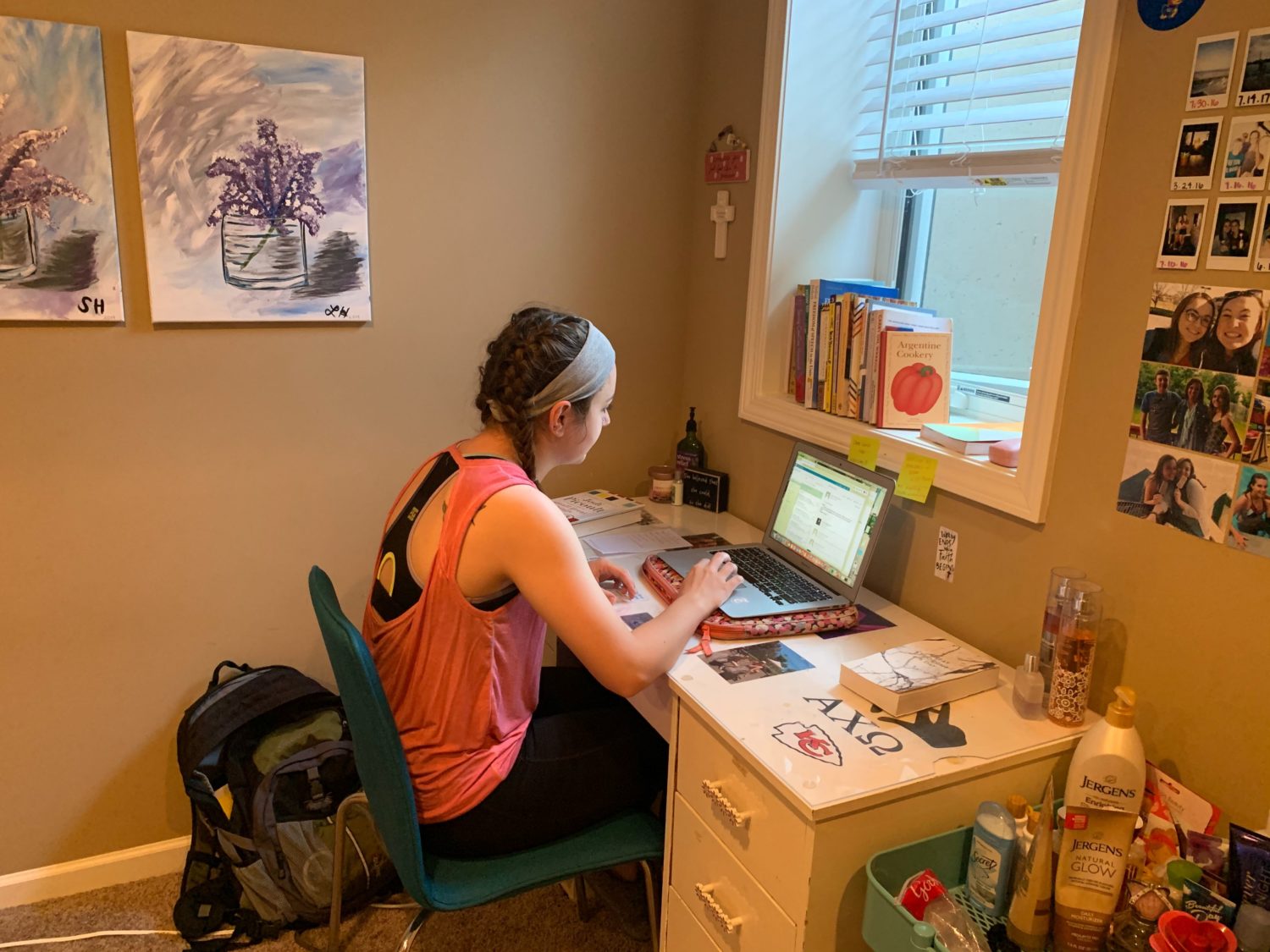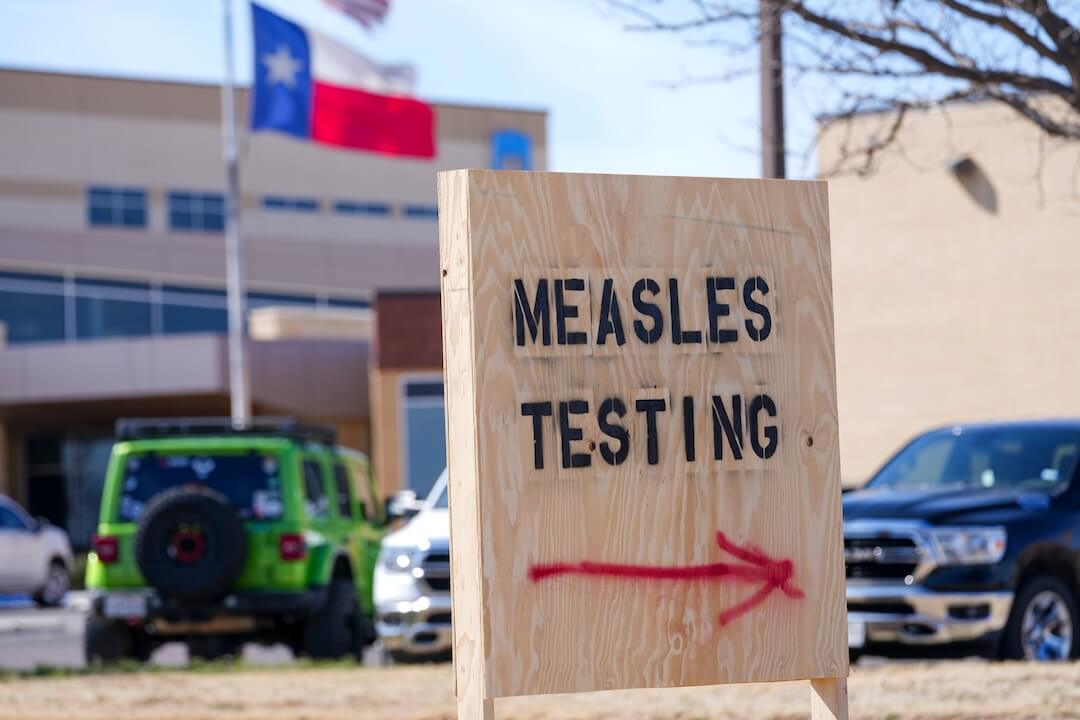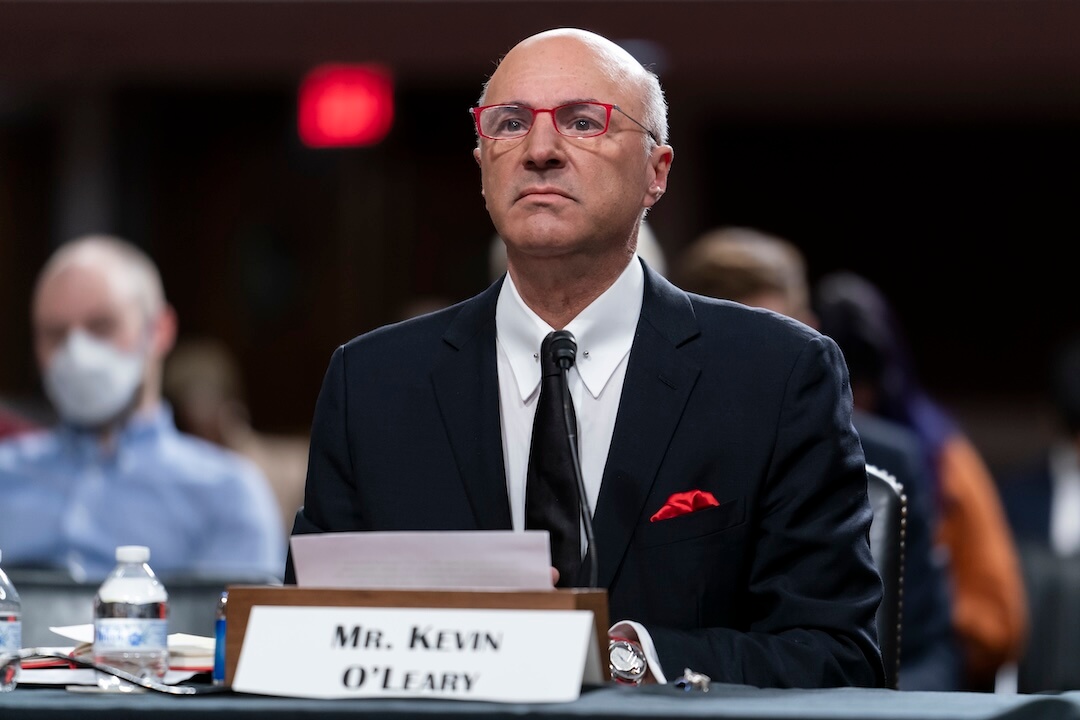How is your local newsroom telling the story of the coronavirus? Let us know.
Sydney Hoover works from a desk under a window in her childhood bedroom in De Soto, Kansas. If it’s nice, she opens that window and listens to the birds as she reports on the Eudora, Kansas, schools that are shut down because of the coronavirus. It’s hard to focus there, where she sleeps, with her family bustling around outside, so she uses a spearmint oil diffuser. That helps.
Lucie Krisman is usually only home on breaks. Now, she sits at a desk in front of a mirror in her childhood bedroom more than 200 miles away from Eudora in Tulsa, Oklahoma. There, she’s covering the decisions of Eudora’s city government. Her parents rearranged things after Krisman left for college, so it doesn’t feel quite the same as it used to.
And when the weather is nice, Cami Koons works in the sun on the front porch of her Lawrence, Kansas, rental, writing stories about how people in Eudora are coping with COVID-19.
Around the world, journalists have built bureaus at kitchen counters, front porches and dining room tables. For a student-run site that’s the only dedicated local news for a small Kansas town, those makeshift bureaus are a window into what’s happening for a community stuck at home.
Overseeing them all is Teri Finneman, an assistant professor at The University of Kansas who launched The Eudora Times as part of a class to bring local news back to Eudora, which hasn’t had its own local newsroom since 2015.
Together, they’re covering the school district, city government, businesses, churches and the people of Eudora as they adapt to life in a pandemic.
Like a lot of people, it took some time for the KU student journalists who make up the newsroom’s core team to see how big this story would be. For Hoover, it became real after she talked to seniors at Eudora High School about missing their senior year. For Krisman, it happened when the pandemic seeped into her interviews, regardless of what they were about.
The young journalists are adapting, too, calling instead of interviewing in person, pushing for access to meetings, scouring social media for sources.
Gen Z’s gets grief for being selfish as the coronavirus spreads and spring breakers partied on, Finneman said in a Zoom call with Poynter and her team.
“It actually makes me emotional to think about these girls on this call right now, and how they are stepping up not getting paid at all,” she said, choking up. “I am constantly sending them stories and pushing them to cover this community, and they are stepping up. It’s just really been amazing to see.”
Related: Here are the newsroom layoffs, furloughs and closures caused by the coronavirus
The number of people following the site’s Facebook page is growing, and early on in the pandemic, donations of $700 came in from the community.
“We have so much news coming right now that I’m trying to recruit additional reporters to join us,” Finneman said.
None of them know when things will return to normal.
“To be a 21-year-old with not a lot of worldly experience, it feels like it’s never gonna end,” Hoover said.
But when it does, they know they’ll be among the journalists who told the story of the coronavirus, which is kind of cool, Hoover said, “in a weird way.”
Kristen Hare covers the transformation of local news for Poynter.org and writes a weekly newsletter on the transformation of local news. Want to be part of the conversation? You can subscribe here. Kristen can be reached at khare@poynter.org or on Twitter at @kristenhare.
This daily look of coverage by local news is made possible with support from the John S. and James L. Knight Foundation







